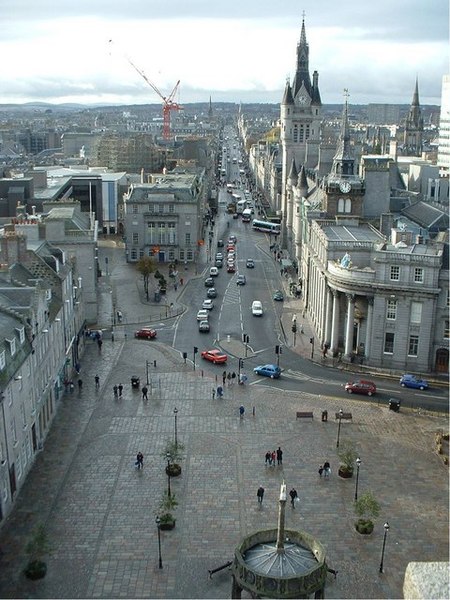Union Street, Aberdeen
Shopping streets in ScotlandStreets in AberdeenUse British English from July 2017

Union Street is a major street and shopping thoroughfare in Aberdeen, Scotland. It is named after the Acts of Union 1800 with Ireland. The street is approximately one mile long (0.8 miles) and a feat of engineering skill involving the partial levelling of St. Catherine's Hill and the building of arches to carry the street over Putachieside. The Denburn Valley was crossed by Union Street by Union Bridge (constructed 1801–05). The Union Bridge holds the record of the 'Worlds largest single span granite bridge' at 130 feet (40 m) across.
Excerpt from the Wikipedia article Union Street, Aberdeen (License: CC BY-SA 3.0, Authors, Images).Union Street, Aberdeen
Union Street, Aberdeen City City Centre
Geographical coordinates (GPS) Address Nearby Places Show on map
Geographical coordinates (GPS)
| Latitude | Longitude |
|---|---|
| N 57.1457098 ° | E -2.1018608 ° |
Address
Union Street 161-165
AB11 6BB Aberdeen City, City Centre
Scotland, United Kingdom
Open on Google Maps








